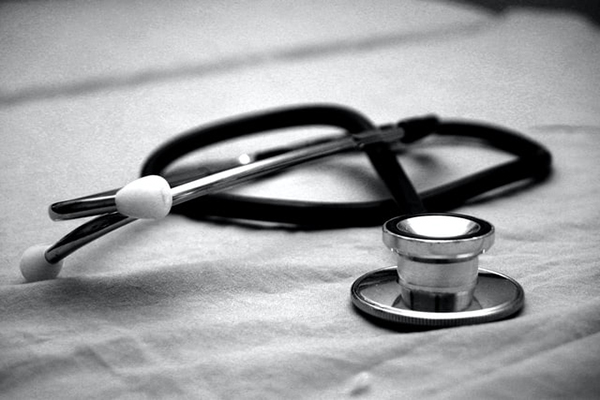PacMed Receives Gold Award in Seattle Business Magazine’s 2017 Leaders in Health Care Awards
Pacific Medical Centers is honored to announce that we have received the Achievement in Community Outreach Gold Award from Seattle Business magazine for its 2017 Leaders in Health Care Awards. This prestigious accolade recognizes PacMed’s outstanding efforts to connect with its diverse patient population and disadvantaged neighborhoods to promote health. This is the second time PacMed has been selected for the award from among the region’s health care community.
One of the many ways PacMed is committed to serving our community and ensuring patients receive access to quality health care is by offering same-day appointments and extended evening and weekend hours. PacMed also provides digital access to health care, enabling patients and providers to communicate through MyChart, its online patient portal. Additionally, PacMed is a founding member of Project Access Northwest, a nonprofit that helps underinsured patients by removing financial barriers to quality care. Today, Project Access Northwest facilities reach more than 35,000 patients in the Puget Sound area.
The Achievement in Community Outreach Award also recognizes PacMed’s commitment to providing health care to underinsured patients, specifically through affordable medicine. PacMed has taken drastic measures to reduce the cost of medications, especially for disadvantaged communities. Today, the organization has an 80 percent rate of prescribing lower cost generic drugs, which is 10 percent better than the industry average.
PacMed is honored to receive the Gold Award for Achievement in Community Outreach as part of Seattle Business magazine’s 2017 Leaders in Health Care Awards. PacMed congratulates its excellent staff and 150+ providers at 11 clinics who make access to quality care possible for patients in the Puget Sound region.
PacMed Wins Gold in Health Care Leaders Awards
Pacific Medical Centers has been awarded the Gold Award in the 2017 Leaders in Health Care Awards: Achievement in Community Outreach.
Quality and respect. These are the words Pacific Medical Centers (PacMed) employees live and work by. The group is a private, not-for-profit, primary and integrated multispecialty health care network with outpatient clinics across the Puget Sound region and more than 168 primary and specialty care providers. Affiliated with the Providence Health & Services system, PacMed provides patient-focused health care — and even same-day appointments — to nearly 100,000 patients in King, Snohomish and Pierce counties.
Its philosophy is to empower patients to participate in their care and focus on wellness, prevention and proactive management of chronic conditions. PacMed’s approach reflects its history as the first U.S. Public Health Service Hospital in Seattle. Throughout its history, PacMed has served diverse patient populations within the community, including the underserved, multiple ethnic groups, military families and commercially insured patients.
PacMed is one of only six providers in the nation and the only provider on the West Coast to bring the U.S. Family Health Plan (USFHP) program to active-duty family members and retired personnel. As a result, some patients have been with PacMed and the program for 15 to 20 years and have developed strong partnerships with their physicians. It’s also a cofounding member of Project Access Northwest, which encourages specialty physicians to provide care at no cost to low-income, uninsured individuals.
Eat More Fiber for Digestive Health
By a PacMed Dietitian
 Are you getting enough fiber in your diet? Adequate fiber intake can help lower cholesterol levels, keep blood sugar levels under control and prevent constipation and diverticulosis.
Are you getting enough fiber in your diet? Adequate fiber intake can help lower cholesterol levels, keep blood sugar levels under control and prevent constipation and diverticulosis.
A high-fiber diet is also usually lower in calories and can increase feelings of fullness after meals, which can help promote a healthy weight. So, how much fiber do we need? What are good sources?
The recommended amount of fiber is 25g per day for women (21g over age 51) and 38g per day for men (30g over age 51). Unfortunately, most Americans fall far short of the recommended amount.
Fiber is found in plant foods such as fruits and vegetables, nuts and seeds, and whole-grain products.
Try these simple substitutions to increase the amount of fiber in your diet:
- Have steel cut oats with nuts and berries for breakfast instead of cereal.
- At lunchtime, choose bread products that say “whole wheat” as one of the first ingredients and add vegetables such as tomatoes, cucumber and spinach to sandwiches or wraps.
- Add more vegetables or beans to casseroles and stews.
- Try brown rice or wheat pasta instead of white rice or pasta.
- Snack on fruits and vegetables during the day instead of packaged snacks from home or the vending machine.
As you increase the fiber in your diet, do it gradually and drink plenty of fluids. You may experience constipation and nausea if you consume more than your usual amount of fiber without adequate fluid intake.
Colorectal Cancer Risks and Prevention
In 2017, the American Cancer Society predicts some 135,000 new cases of colorectal cancer and about 50,000 deaths. But this doesn’t have to be the case! The disease is largely preventable with regular screening and is treatable with early detection.
If you are over 45 or have a family history of colorectal cancer, talk to your doctor about getting screened today. The more you know, the better you can take care of your health.
Colorectal Cancer Signs & Symptoms
Colorectal cancer—also commonly called colon cancer—often has no symptoms. This is why screening is so important. These symptoms, however, might indicate colorectal cancer:
- Blood in your stools
- Unexplained abdominal pain
- Unexplained change in bowel habits
- Unexplained anemia
- Unexplained weight loss
Screening/Early Detection
Colon cancer is mostly preventable with regular screening. Screening can help catch colon cancer at an early, curable stage. It also gives your care team the ability to find and remove precancerous polyps.
Beginning at age 45, both men and women who are at average risk for developing colorectal cancer should have a screening colonoscopy and then repeat the procedure every 10 years. All men and women are at risk for colorectal cancer. However, African Americans, Hispanics and Ashkenazi Jews (people of Eastern European descent) are at a higher risk for the disease than other populations.
Understand Your Insurance Coverage
Before you get your screening, be sure to talk with your insurance company about your coverage for a colonoscopy. It’s important to understand your insurance coverage for a routine, preventive colonoscopy screening—but also your coverage if a biopsy or polyp is removed during your screening.
A Colonoscopy Is Easier Than You Think
A colonoscopy could save your life! When colorectal cancer is detected early, it can be treated. But many people avoid getting a colonoscopy because they feel embarrassed or afraid. Here’s what to expect.
A colonoscopy is a medical screening that checks your colon for cancer and any polyps (unusual growths). To do the screening, the doctor uses a thin, flexible scope that has a light and a small camera on the end. The procedure usually lasts just 15–30 minutes.
For the vast majority of patients, a colonoscopy is easy or mildly uncomfortable. The benefit can be enormous—life-saving, in fact! Learn more by talking with your primary care provider or gastroenterologist.
At-Home Preparation
The preparation you do at home in the days before your colonoscopy are key to a successful screening. If you don’t understand any part of the instructions, be sure to ask your doctor or nurse.
The colon must be empty and clean before the screening. So, for several days before the procedure, you will follow a limited diet. On the day before the screening, you will drink large amounts of a laxative, to ensure your colon is empty. (You will need to be at home on this day because you will use the bathroom frequently.) For the last half-day or night, you will consume only clear fluids.
Finally, be sure to enlist a friend or family member to drive you home from the screening. You cannot take a cab or other service.
During the Colonoscopy
You will be lightly sedated so you relax. You will probably feel sleepy. Most people, in fact, are unable to remember the procedure afterward.
During the screening, you will be covered with a drape. The doctor will examine the walls of your colon using the scope. If you are awake, the doctor will let you know what to expect and check on your comfort. If the doctor finds some small polyps (growths), those may be removed because some polyps can become cancerous over time. If the doctor finds larger polyps, those will be removed and sent to the lab for testing.







